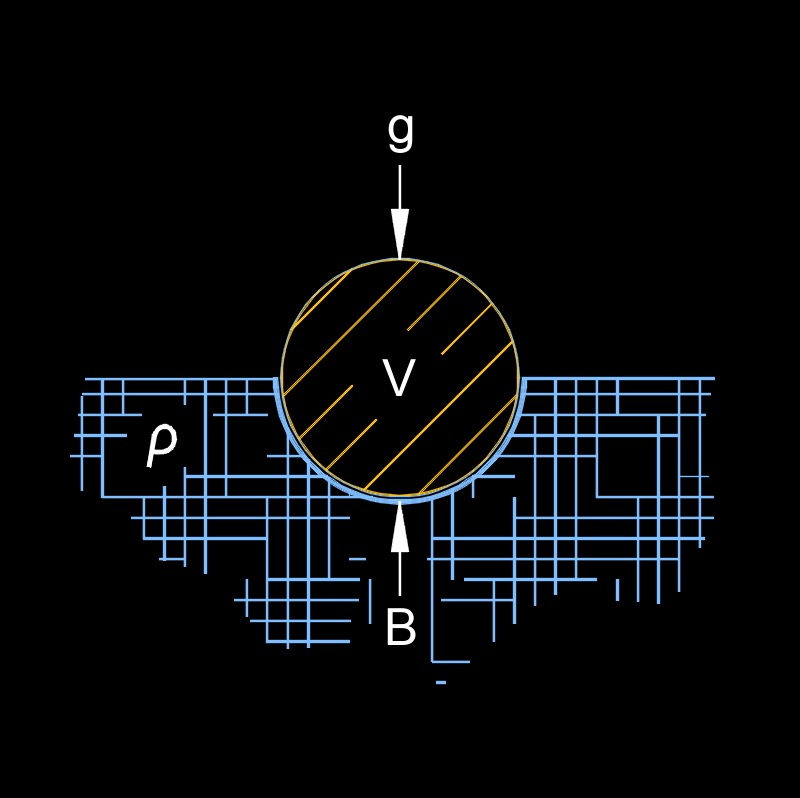Buoyancy Force
Buoyancy Force Formula |
||
|
\( F_b \;=\; \rho \cdot g \cdot h \cdot A \) (Buoyancy Force) \( \rho \;=\; \dfrac{ F_b }{ g \cdot h \cdot A }\) \( h \;=\; \dfrac{ F_b }{ \rho \cdot g \cdot A }\) \( A \;=\; \dfrac{ F_b }{ \rho \cdot g \cdot h }\) |
||
| Symbol | English | Metric |
| \( F_b \) = Buoyancy Force | \( lbf \) | \(N\) |
| \( \rho \) (Greek symbol rho) = Fluid Density | \(lbm \;/\; ft^3\) | \(kg \;/\; m^3\) |
| \( g \) = Gravitational Acceleration | \(ft \;/\; sec^2\) | \(m \;/\; s^2\) |
| \( h \) = Height of Liquid Displaced by a Floating Object | \( ft \) | \( m \) |
| \( A \) = Object Surface Area | \( ft^2 \) | \( m^2 \) |
 Buoyancy force is the upward force exerted by a fluid on an object that is partially or completely submerged or immersed in the fluid. This force is the result of the differences in pressure that exist at different depths within the fluid due to the gravitational pull on the fluid's mass. The concept of buoyant force is used in fluid mechanics and plays a significant role in explaining why objects either float or sink in fluids.
Buoyancy force is the upward force exerted by a fluid on an object that is partially or completely submerged or immersed in the fluid. This force is the result of the differences in pressure that exist at different depths within the fluid due to the gravitational pull on the fluid's mass. The concept of buoyant force is used in fluid mechanics and plays a significant role in explaining why objects either float or sink in fluids.

Buoyancy Force Formula |
||
|
\( F_b \;=\; \gamma \cdot V \) (Buoyancy Force) \( \gamma \;=\; \dfrac{ F_b }{ V }\) \( V \;=\; \dfrac{ F_b }{ \gamma }\) |
||
| Symbol | English | Metric |
| \( F_b \) = Buoyancy Force | \( lbf \) | \(N\) |
| \( \gamma \) (Greek symbol gamma) = Liquid Specific Weight | \(lbf\;/\;ft^3\) | \(N\;/\;m^3\) |
| \( V \) = Object Volume | \(ft^3\) | \(m^2\) |
